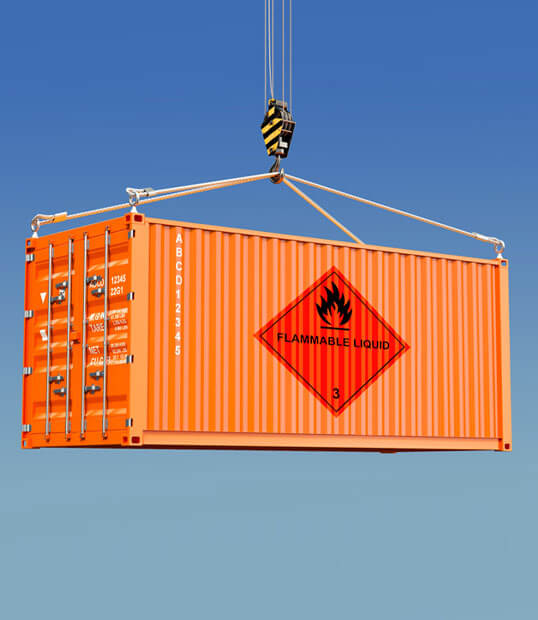


















Transportation of dangerous goods
Services provided
Global import and export is a service that all freight forwarders can provide, but when it comes to air, land and sea transportation of dangerous goods, most people refuse to provide this service, which is why Great Link is different.
We have dedicated staff trained in the handling, packaging and distribution of dangerous goods by air and sea and work in strict compliance with a range of international agreements for different modes of transport.
Great Link can easily transport your dangerous goods by any means of transportation through strict compliance with dangerous goods regulations, proper packing and proper filling of relevant documents.
Regulations on Transportation of Dangerous Goods:
Dangerous goods Elements that pose a risk to health and safety or are likely to cause damage to persons property or the environment such as explosive substances flammable gases and liquids or corrosive substances. In order to minimize or mitigate such risks, the transport of dangerous goods must comply with strict conditions set out in a series of international agreements for different modes of transport.
 Air Transport: International Air Transport Association (IATA) Dangerous Goods Regulations (DGR)
Air Transport: International Air Transport Association (IATA) Dangerous Goods Regulations (DGR)
 Maritime Transport: International Maritime Dangerous Goods (IMDG) Rules
Maritime Transport: International Maritime Dangerous Goods (IMDG) Rules
 Roads: European Agreement on the International Carriage of Dangerous Goods by Road (ADR)
Roads: European Agreement on the International Carriage of Dangerous Goods by Road (ADR)
 United Nations Economic Commission for Europe (UNECE): Dangerous Goods
United Nations Economic Commission for Europe (UNECE): Dangerous Goods

Dangerous Goods (
Dangerous goods transportation company
)
Transport labeling and classification:
Class 1 explosive materials and articles.
Class 2 gases are compressed, liquefied or dissolved under pressure.
Class 3 flammable liquid substances.
Class 4.1 flammable solids.
4.2 Substances are prone to spontaneous combustion.
4.3 Substances that emit flammable gases when exposed to water.
5.1 Oxidizing substances.
5.2 Organic peroxides.
Class 6.1 Toxic Substances.
Class 6.2 infectious substances.
Class 7 radioactive substances.
Category 8 corrosive substances.
Class 9 All kinds of hazardous materials and articles.
In the transportation of dangerous goods, the sender is responsible for classifying, packaging and marking the transported goods. Therefore, compliance can also be very challenging.
Improper use of dangerous goods can lead to delays, extra costs, and even loss or confiscation of goods. Carriers usually refuse to dispose of incorrectly labeled dangerous goods, and national governments may even confiscate these dangerous goods or impose fines in some cases.
Working with experienced transport consultants can mitigate these risks.
The first step of packaging and transportation services is to ensure that all goods are correctly classified and labeled. We are committed to ensuring that all goods arrive on time within budget.
Send us an email and we can help!



















